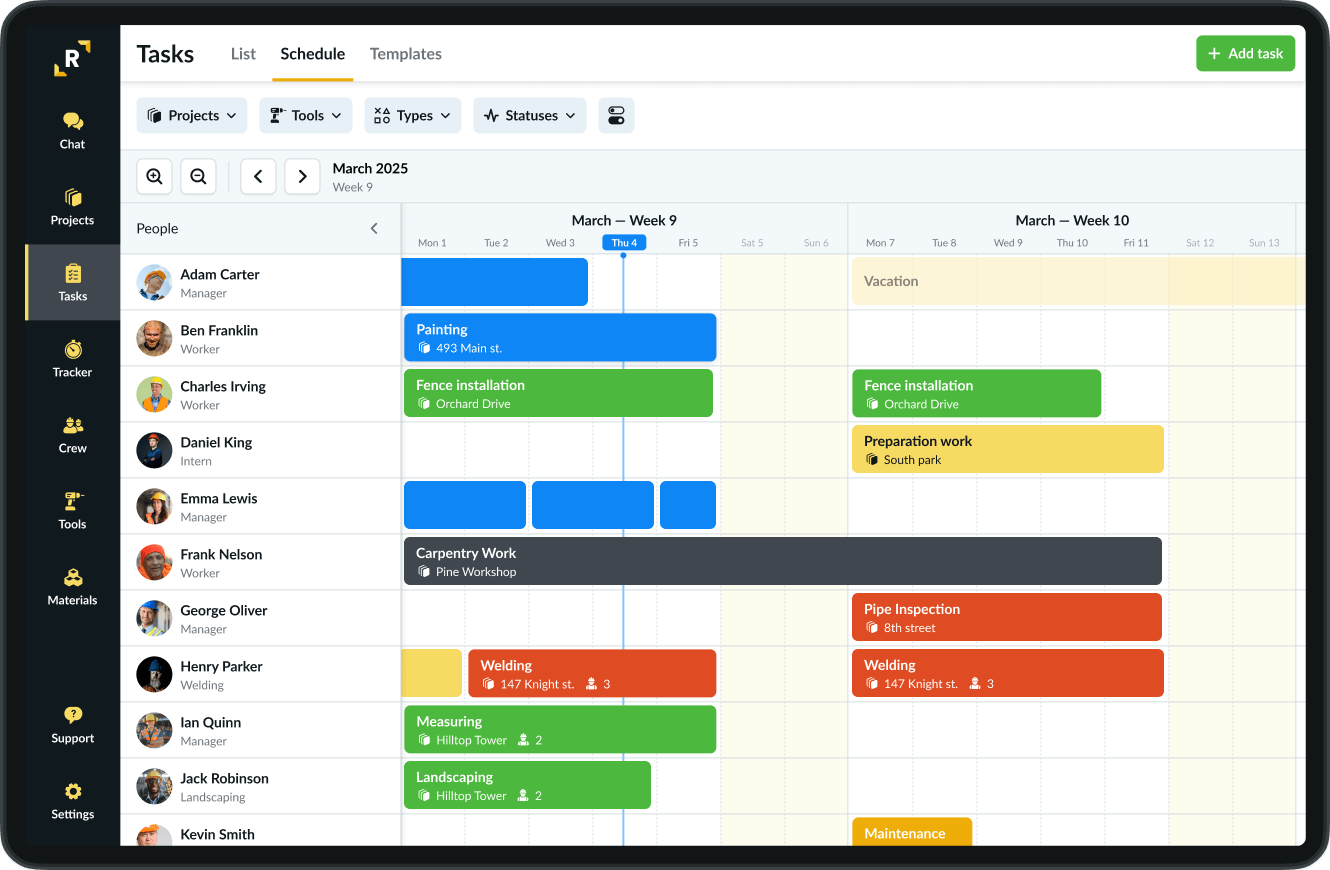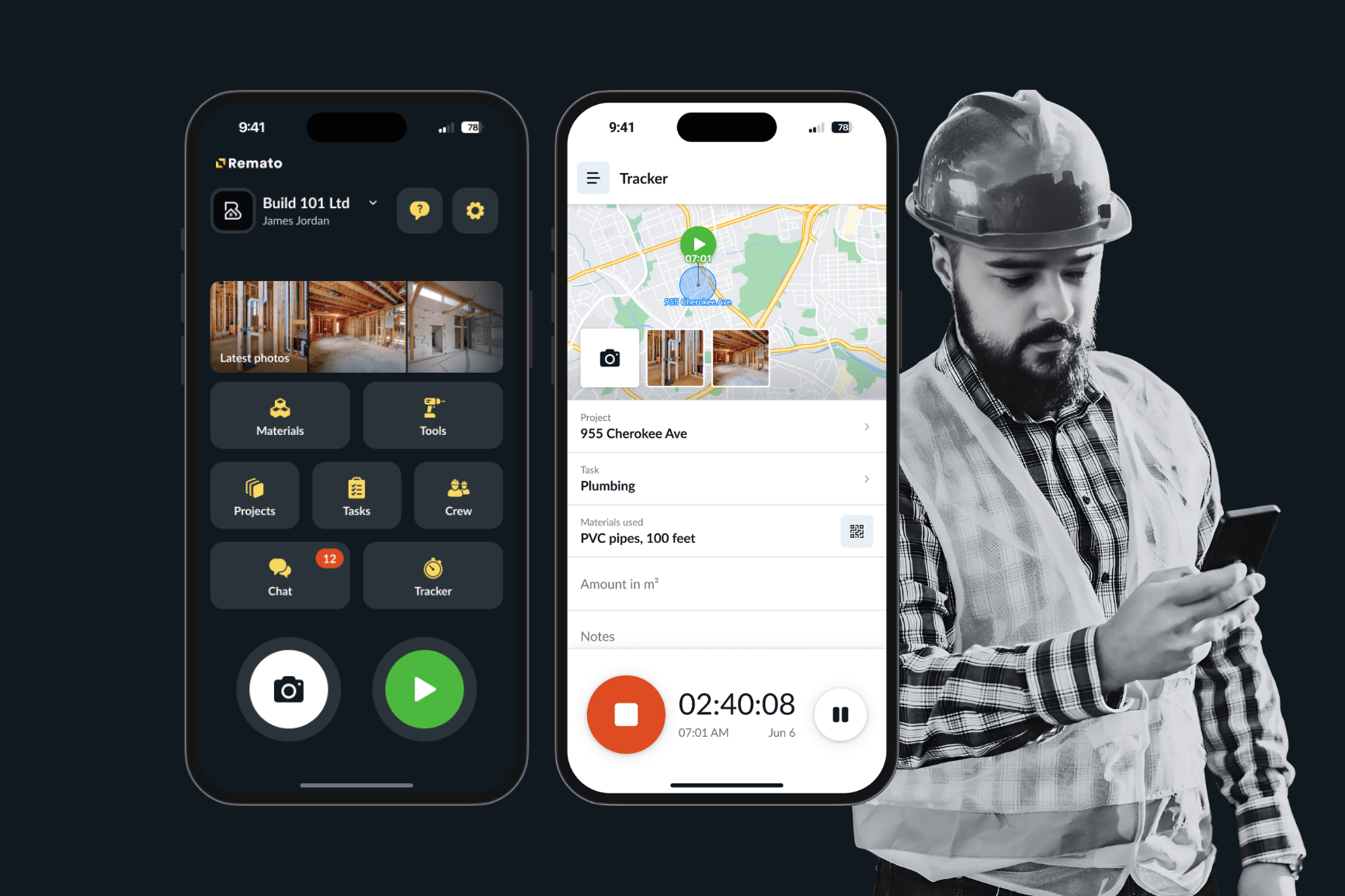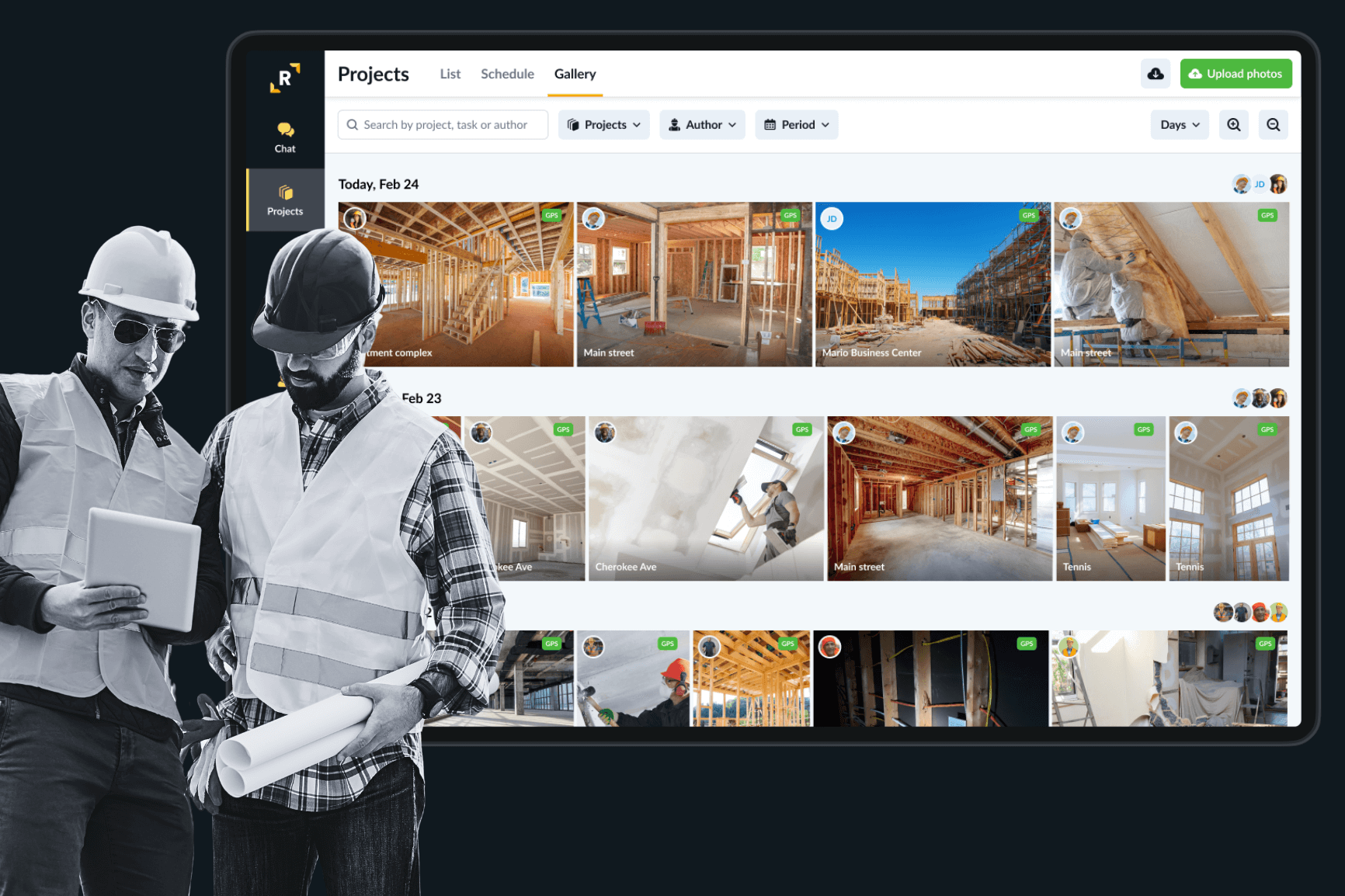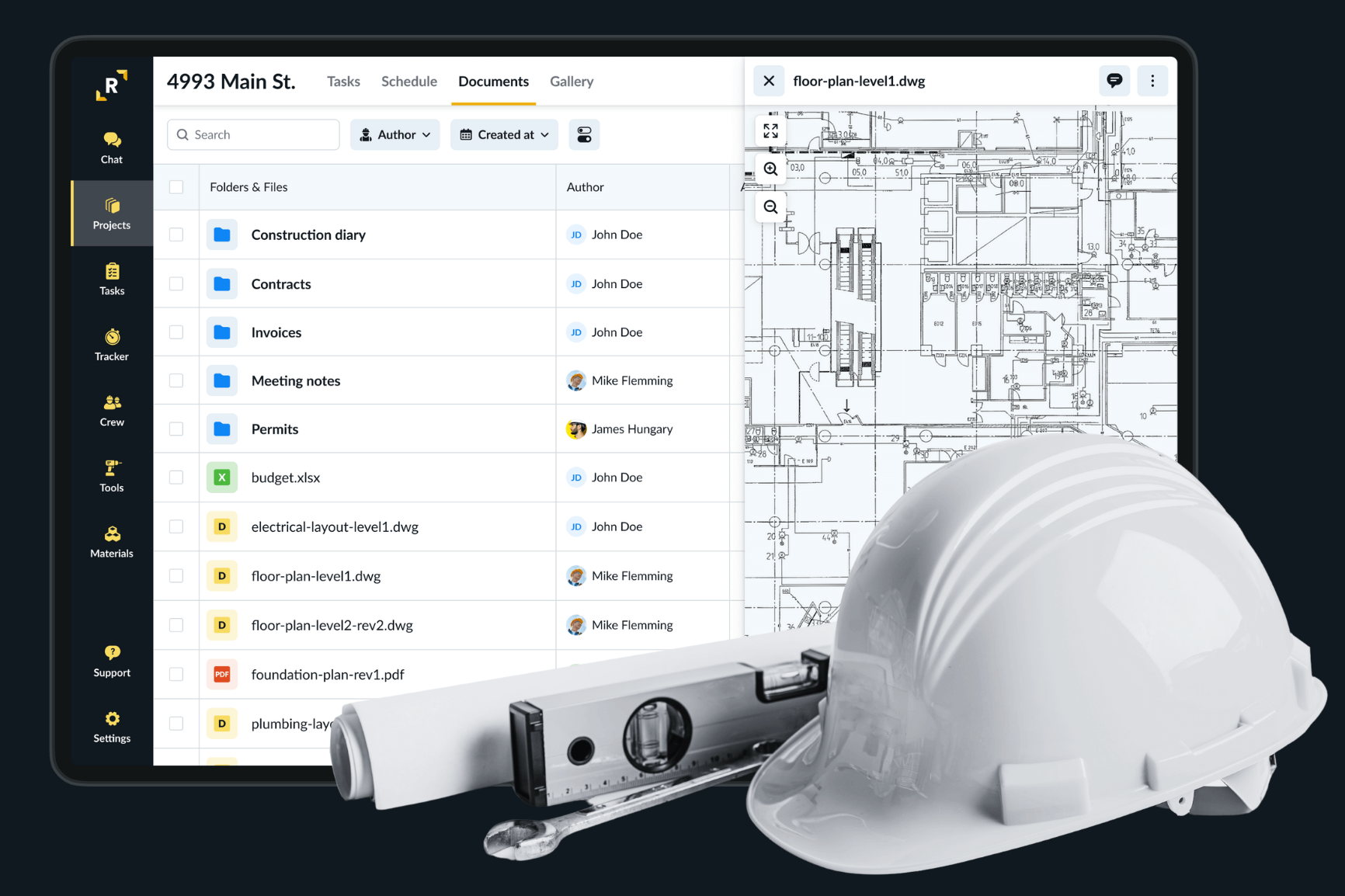Construction Site Diaries – Here is What You Should Know
Construction site diaries are legally required documents that serve as official records of construction progress, activities, and site-related events. They are regulated under construction law and must follow strict formalities.
Here is what you should know, based on Poland and Finland Construction Industry.
Table of Contents
Site diaries legal requirement
A site diary is mandatory for most construction projects, once a building permit is issued. This requirement is governed by the Construction Law Act and related regulations. The diary must be issued by the local building authority and serves as an official record of the construction process.
What’s recorded in site diaries
The construction site diary serves as a chronological and formal record of all site activities. Typical entries include:
Pre-construction Setup:
- Building Permit – issued by the local authority.
In Poland, a building permit (pozwolenie na budowę) is mandatory for most projects and must be obtained before work begins.
In Finland, the equivalent is a rakennuslupa, typically granted by the municipal building supervision authority.
- Official Site Diary – issued and stamped by the building authority (in paper or digital form).
In Poland, this must be physically issued and approved by local authorities or registered through the official digital platform (e-Dziennik Budowy).
In Finland, there’s no state-issued diary, but documentation is still required, and many companies use digital tools like Remato or other site logs to meet internal compliance.
- Construction Site Plan – showing layout, access routes, utilities, etc.
In Poland, the plan is submitted during the permit phase and must be available on site.
In Finland, it’s called a työmaasuunnitelma and includes logistics, safety zones, and infrastructure.
- Project Design Documentation – including architectural, structural, electrical, and mechanical plans.
In Poland, this is part of the projekt budowlany and must be approved alongside the permit.
In Finland, it’s often separated into architectural planning (ARK) and engineering planning (RAK/S) and submitted in phases depending on the permit type.
- List of Responsible Persons – e.g. site manager, investor representative, site supervision inspector.
In Poland, this includes the Kierownik Budowy (site manager), Inwestor (client), and Inspektor Nadzoru (supervising inspector).
In Finland, there must be a vastaava työnjohtaja (responsible site manager) registered before construction starts, often appointed by the main contractor. - Health & Safety Plan – mandatory for most construction projects.
In Poland, this plan is known as Plan BIOZ and is required before work begins.
In Finland, the equivalent is a työturvallisuussuunnitelma (Occupational Safety Plan), which must align with the Occupational Safety and Health Act (738/2002).
Daily Operations & Diary Entries:
- Work Schedules / Gantt Chart – tracking planned vs. actual progress.
In Poland, Gantt charts are used to visualise project timelines and match inspections to milestones.
In Finland, similar planning tools are standard and often integrated into digital construction management platforms.

- Daily Weather Conditions – temperature, precipitation, wind, etc.
In Poland, weather conditions must be recorded daily in the site diary for compliance.
In Finland, documenting weather is recommended for risk assessment and insurance, though not mandatory.
- Labor Force Records – number and type of workers on site each day.
In Poland, workforce logs must be maintained daily for legal and administrative purposes.
In Finland, workforce data is required for tax and safety control and must be submitted to the occupational safety database (e.g., Ilmoita).

- Material Delivery Receipts – showing time and type of delivery.
In Poland, delivery records help verify material usage and are often attached to the diary.
In Finland, documentation of materials is necessary for quality tracking and financial auditing. - Inspection Records – from supervising inspector, fire authority, etc.
In Poland, each official inspection must be logged with signatures.
In Finland, inspection details are reported to municipal authorities and stored digitally.
- Machinery Use Logs – what was used, when, and by whom.
In Poland, large equipment usage is often noted in the diary and used for cost tracking.
In Finland, digital tracking is common and connected to site productivity and rental systems. - Incident Reports – accidents, stoppages, delays, or safety breaches.
In Poland, any incident must be recorded immediately in the diary and may trigger inspections.
In Finland, incidents must be reported to the Finnish Safety and Chemicals Agency (Tukes) and logged for internal review. - Change Orders / Variations – signed instructions for modifications.
In Poland, changes must be formally documented and approved by the project manager or investor.
In Finland, modifications are added to project records and usually require client sign-off and updated cost estimates.
Entry Contributors
Signatures and Dates – every entry must be signed (electronically or manually) by an authorised person. In Poland, each diary entry must include a date and signature, typically handwritten or using an officially approved digital system.
In Finland, electronic signatures or verified logins are commonly used and accepted as legal proof.
- Site Manager (Kierownik Budowy / Vastaava Työnjohtaja)
In Poland, the Kierownik Budowy is the primary party responsible for updating and signing the diary.
In Finland, the vastaava työnjohtaja plays the same legal role and must be registered before construction begins.
- Supervising Inspector (Inspektor Nadzoru / Rakennustarkastaja)
In Poland, the Inspektor Nadzoru acts independently and can add notes during inspections.
In Finland, the municipal rakennustarkastaja monitors compliance but may not be involved in daily entries.
- Architect or Designer (Projektant / Suunnittelija)
In Poland, the Projektant contributes notes when needed, particularly during design changes or structural reviews.
In Finland, the suunnittelija may provide digital comments or approvals, depending on their contract role.
- Investor Representative (Inwestor / Rakennuttaja)
In Poland, the Inwestor can comment or request entries to be added, but cannot override official responsibilities.
In Finland, the rakennuttaja (project owner) often uses project platforms to review updates and issue approvals.
Other Supporting Documents
- Construction Contracts
- Delivery Notes and Invoices
- Correspondence with Authorities
- Minutes of Site Meetings
- As-built Documentation Updates
- Photos or Drawings of Key Stages – especially in digital diaries.
A construction site diary serves as a comprehensive daily record of all activities, progress, and events occurring on a construction site. In Poland, it is a legally mandated document under the Construction Law Act (Prawo budowlane, Article 45) and the Regulation on Construction Site Documentation (Rozporządzenie w sprawie prowadzenia dziennika budowy). These diaries must maintain detailed documentation of the construction process and be physically issued or registered on a government platform like e-Dziennik Budowy.
In Finland, while there is no nationally issued site diary, proper documentation is still required for legal, insurance, and quality purposes. Many companies use internal digital tools or platforms such as Remato to log daily progress, safety checks, and incidents, meeting the standards of the Occupational Safety and Health Act (738/2002).
In Estonia, while there’s no central legal obligation to use a specific format like in Poland, site diaries are standard practice, particularly in larger public or tender-based projects. Local contractors often rely on digital tools to document weather conditions, task progress, deliveries, workforce data, and safety notes—especially when reporting to supervisors, clients, or government authorities.
The site diary functions not just as a legal safeguard, but also as a project management tool—from initial site handover to project completion. All entries must also be dated and signed.
Who Is Responsible for Keeping a Good Site Diary
Maintaining a legally valid and accurate site diary is a shared responsibility on construction sites—but the primary accountability lies with the site manager. Other project stakeholders also have the right to contribute, ensuring a well-documented and transparent build process.
Key responsibilities include:
- The site manager (kierownik budowy / vastaava työnjohtaja) is the main party responsible for keeping the diary up to date.
- Other stakeholders, such as the investor, supervising inspector, designer, or client representative—may add comments or observations but cannot replace the site manager’s official role.
- All entries must be made promptly, factually, and without falsification, as incorrect records can lead to legal penalties or project delays.
Format: Paper or Digital Site Diary
Construction diaries have traditionally been paper-based, but modern sites are quickly adopting digital tools to streamline the process and improve accessibility.
Common formats include:
- Paper diaries: Bound, stamped, and issued by the local building authority (still mandatory in Poland in many cases).
- Digital diaries: Now legally accepted in Poland and widely used in Finland and Estonia through platforms like Remato.
- Requires ePUAP login and verification in Poland
- Easier sharing, backups, and remote access
- Still in transition phase in many regions
Importance for Project and Compliance
A site diary is not just a formality, it plays a key role in ensuring project quality, accountability, and legal protection throughout construction.
Why it matters:
- Acts as evidence in legal disputes, insurance claims, or construction defect investigations
- Required during audits, inspections, and especially at the time of project handover
- A poorly kept or missing diary can:
- Delay project approvals
- Jeopardize final occupancy permits
- Undermine trust with investors or authorities
Penalties for Non-Compliance
Failing to properly maintain a site diary isn’t just careless—it can carry real consequences. Authorities in Poland, Finland, and Estonia take documentation seriously, especially on larger or public projects.
Possible outcomes of non-compliance include:
- Fines issued by municipal or national building authorities
- Delays in project scheduling and handovers
- Legal disputes over liability, defects, or incomplete records
- Failed inspections leading to stalled progress or revoked permits
Key Takeaways: Construction Site Diaries in Practice
Maintaining a Construction Site Diary
Keeping a construction site diary helps to build a reliable daily record that supports construction project quality, safety, and transparency.
- Legal Compliance
- In Poland, maintaining a site diary is mandatory, with strict regulations and official formats (paper or e-Dziennik Budowy).
- In Finland and Estonia, while not always legally required, daily reporting is an established best practice – especially for larger or publicly funded builds.
- Structured Daily Entries
- Record weather conditions, crew presence, equipment usage, material deliveries, and any incidents.
- All entries must be accurately dated and signed (manually or digitally), often by multiple project stakeholders.
For a deeper dive into modernizing this process, Remato’s article on managing digital site diaries explains how construction professionals are simplifying compliance and reporting workflows.
Improving Daily Site Reporting
Manual notebooks or Excel sheets can slow down reporting and increase the risk of error. Digital tools streamline this process and ensure consistency.
- Use Tools like Remato
- Automate daily logs with photos, tasks, and weather updates.
- Enable site managers and inspectors to add real-time entries directly from mobile devices.
- Ensure Legal and Audit Readiness
- With digital reporting, diary entries are timestamped, backed up, and easily accessible during audits or inspections.
Curious what problems digital reporting solves in practice? This article highlights the most common frustrations site managers face—and how modern tools fix them. You can also read Remato’s detailed guide on improving the construction daily progress report process to understand how consistent documentation impacts project outcomes and compliance
Visual Documentation & Evidence
Visual records are a powerful complement to written site diaries—especially for quality control, safety documentation, and dispute protection.
- Centralized Image Storage
- Store photos, drawings, and inspection visuals inside your diary platform.
- Ensure documentation is tied to the specific day and task for traceability.
- Proof for Authorities and Clients
- Help validate reported progress or justify delays.
- Photos act as verifiable evidence during project handovers and inspections.
If you’re unsure how to improve your photo documentation process, this Remato blog post shares actionable tips and pitfalls to avoid- especially for subcontractors managing complex builds.

Managing Site Diaries Across Multiple Projects
For companies working on several sites at once, visibility and consistency are critical.
- Digital Dashboards Help You Stay in Control
- Tools like Remato provide an overview of all active sites, including who filled out the diary, whether entries are missing, and if safety forms were submitted.
- Reduce Miscommunication
- Centralised platforms allow office staff, supervisors, and field crews to collaborate on the same up-to-date information—reducing delays and misunderstandings.
Want to see what a modern jobsite documentation system looks like? This article explains how dashboards, task updates, and real-time data work together in one connected view.
